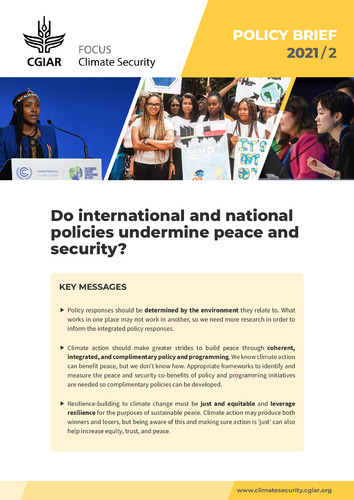Do national and international policies undermine climate security?
Coherence between different policy and programming objectives, instruments, and implementation has long been an important goal of multilateral governance and development efforts. Policy coherence – as defined by the OECD – can be understood as the systematic promotion of mutually reinforcing policy actions across government departments and agencies, creating synergies towards achieving agreed objectives (Trinity Dublin College, 2017). Perhaps the most well-known methodological framework to assess and help improve cross-sectoral policy coherence is the OECD’s Policy Coherence for Sustainable Development (PCSD), which provides practical guidance, self-assessment checklists, good practice examples, and tools to analyse, enhance, and track progress on policy coherence in the implementation of the sustainable development goals (SDGs) (OECD, 2021). Ensuring alignment across both sectors and administrative scales is therefore identified as crucial to prevent unintended consequences and minimise the effects of potentially conflicting agendas, particularly when tackling complex issues such as climate change, of which full and exact impacts remain unpredictable.

